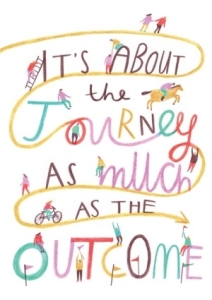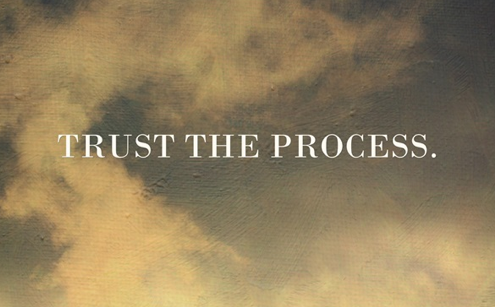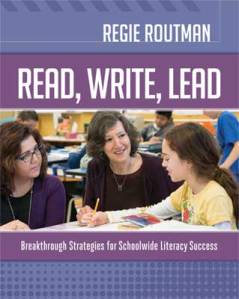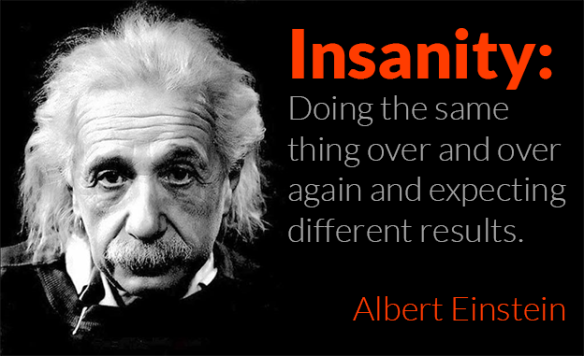
The late, great writer Ursula Le Guin believed that “We read books to find out who we are. What other people, real or imaginary, do and think and feel… is an essential guide to our understanding of what we ourselves are and may become.” I believe this, too, which is why I made a case in my last post for bringing interpretation back into classrooms, as the means through which we can reap reading’s ultimate benefit. But here’s the other thing about interpretation: In addition to helping us develop moral compasses, empathy, and self-awareness, I think academically interpretation also helps us analyze. In fact, I see interpretation as the too often unrecognized behind-the-scene work needed for real analysis.
Think about it for a moment: Interpretation involves putting pieces of a text together to construct an understanding of its deeper meaning. It’s an act of construction, while analysis, on the other hand, deconstructs by separating a whole into its component parts ostensibly to see how the parts affect the whole. But how can readers analyze the function of the parts if they don’t really have a vision of the whole?
 I suppose it’s possible to do this if both the whole and its parts are known or familiar, like the dog and its disassembled parts above. But as I wrote in Dynamic Teaching for Deeper Reading, readers who don’t have a vision of the whole beyond the gist can wind up like the blind men in the old Indian tale, who attempted to understand what an elephant was by analyzing a part of it. One man touched the trunk and thought an elephant was a snake; another felt the tail and concluded it was a rope; a third stroked the ear and thought an elephant was a fan. No one was able to make sense of the whole by analyzing a part.
I suppose it’s possible to do this if both the whole and its parts are known or familiar, like the dog and its disassembled parts above. But as I wrote in Dynamic Teaching for Deeper Reading, readers who don’t have a vision of the whole beyond the gist can wind up like the blind men in the old Indian tale, who attempted to understand what an elephant was by analyzing a part of it. One man touched the trunk and thought an elephant was a snake; another felt the tail and concluded it was a rope; a third stroked the ear and thought an elephant was a fan. No one was able to make sense of the whole by analyzing a part.
When you have a deeper vision of the whole, however, analysis can be far more insightful. The third graders I wrote about in my last post, for instance, who were reading The Old Woman Who Named Things, didn’t notice every detail or initially understand every word. But once they’d developed an interpretation that encapsulated the whole, they were able to go back to a passage like this and have lots to say about why the writer had decided to have the old woman read this particular book.

In this way, these students were analyzing without explicitly being taught to do so. No learning to use acronyms like RAFT or ACE or sentence starters and templates. Instead, their analysis was a natural out-growth of having meaningfully interpreted the text. And if you’re wondering if what I’m describing is actually analysis, just imagine this example reframed as a question on a standardized Common Core test: “How does this paragraph contribute to the author’s message (or the theme or the character’s development)?”
Questions like this form the bulk of both the multiple choice questions and short constructed responses that students encounter on the PARCC, Smarter Balance and New York State/Engage NY assessments. And in my work with teachers, I’ve been recommending that once students have been able to thoroughly discuss and interpret whatever texts they’ve read as inter-active read alouds, whole class novels, or book club books, you invite them to consider a few analysis questions that either you or the students themselves can create by combining one word or phrase from each column (like the Chinese restaurant menus of my childhood):

I keep finding new words to add to this chart, so it’s a work in progress. But one thing I know for sure is that while students might need to learn the meaning of and nuances between these verbs, they’ll be far more ready to answer these kinds questions if they’ve thought deeply and interpreted what they’ve read, rather than staying on the surface—or, as many students do, only start to think until they hit the questions. And interestingly enough, I’m not the only one who believes this.
 Last month, I came across a blog post by Timothy Shanahan called “If You Really Want Higher Test Scores: Rethink Reading Comprehension Instruction.” In the early days of the Common Core, Shanahan spent much time promoting the teaching of close reading by having students answer text-dependent questions over the course of three readings, the first to consider what the text says, the second how it says it, and the third what it means. More recently, however, he’s recognized that this has led many teachers to have a warped view of what it means to read. “Simply put,” he writes,
Last month, I came across a blog post by Timothy Shanahan called “If You Really Want Higher Test Scores: Rethink Reading Comprehension Instruction.” In the early days of the Common Core, Shanahan spent much time promoting the teaching of close reading by having students answer text-dependent questions over the course of three readings, the first to consider what the text says, the second how it says it, and the third what it means. More recently, however, he’s recognized that this has led many teachers to have a warped view of what it means to read. “Simply put,” he writes,
Reading is NOT the ability to answer certain kinds of questions about a text. . . Not knowledge, comprehension, analysis, synthesis or evaluation questions. Not “right there,” “think and search,” “author and me,” or “on my own” questions. Not main idea, detail, inference, structure or author’s tone questions.
[Instead] reading is the ability to make sense of the ideas expressed in a text [through] the ability to negotiate the linguistic and conceptual barriers of a text” (or what I call ‘the problems’ a given text poses). Students who can make sense of a text’s ideas will be able to answer any kind of question about that text. While students who fail to scale those linguistic and conceptual barriers”—i.e., to solve those problems—will struggle with the simplest of questions.
And how does he propose teaching kids to do this? Basically, once they’ve learned to decode, by teaching them how to interpret.
Of course, the title of the blog post suggests that Shanahan sees higher test scores as the end goal of interpreting, whereas I see them as the by-product of more authentic and meaningful work. But just think about it: If we provided students with lots of opportunities to interpret right from the start of the year—with time set aside to regularly practice and experience how to move from interpretation to analysis, we wouldn’t have to drive ourselves and our students crazy with test prep at this point in the year. So let’s trade in all those literary analysis sentence stems, acronyms and worksheets and focus on supporting student interpretations as the backbone of analysis.



 surprised to hear this. As I researched for
surprised to hear this. As I researched for 
 That process can be seen in the journey a third-grade class I wrote about in
That process can be seen in the journey a third-grade class I wrote about in 







 . Luce thought it might have to do with the words sex stereotypes (which she pointed to rather than said out loud), and the rest thought that was possible. So with this thinking on the table, they were ready to wrestle with the rest of the piece, which continued to puzzled them.
. Luce thought it might have to do with the words sex stereotypes (which she pointed to rather than said out loud), and the rest thought that was possible. So with this thinking on the table, they were ready to wrestle with the rest of the piece, which continued to puzzled them. Given time to question, ponder and think, these students arrived at the same implicit and nuanced idea that you, yourself, may have had. And as they talked about what they had learned about people and life through the story, some said that Jean Little had shown them that age doesn’t always determine maturity, while others thought she had shown them that sometimes you might be in a box even if you think you’re not. They also had lots of strong opinions about people who thought women couldn’t do the same jobs as men. And when I asked if they thought they’d learned anything as readers from this experience, here’s what they had to say:
Given time to question, ponder and think, these students arrived at the same implicit and nuanced idea that you, yourself, may have had. And as they talked about what they had learned about people and life through the story, some said that Jean Little had shown them that age doesn’t always determine maturity, while others thought she had shown them that sometimes you might be in a box even if you think you’re not. They also had lots of strong opinions about people who thought women couldn’t do the same jobs as men. And when I asked if they thought they’d learned anything as readers from this experience, here’s what they had to say:


 In the age of the Common Core, book reviews seem to have taken a back seat to analytic literary essays. This seems a shame to me—especially when students are invited to aspire to the kinds of student-written book reviews that regularly appear in the magazine
In the age of the Common Core, book reviews seem to have taken a back seat to analytic literary essays. This seems a shame to me—especially when students are invited to aspire to the kinds of student-written book reviews that regularly appear in the magazine  Every year the Library of Congress sponsors a writing contest for grade 4-12 students called “
Every year the Library of Congress sponsors a writing contest for grade 4-12 students called “ —so much so that students may have no idea what it could look and sound like. Teacher modeling, of the sort shared at
—so much so that students may have no idea what it could look and sound like. Teacher modeling, of the sort shared at 

 despite the fact that it was cheaper than McDonald’s Quarter Pounder and preferred in blind taste tests. Turns out the problem was that customers believed they were getting more beef for their money at McDonald’s, because they’d reasoned that one-fourth was greater than one-third since four was larger than three.
despite the fact that it was cheaper than McDonald’s Quarter Pounder and preferred in blind taste tests. Turns out the problem was that customers believed they were getting more beef for their money at McDonald’s, because they’d reasoned that one-fourth was greater than one-third since four was larger than three. i couldnt believe it the door opened in the middle of math class and the principal pushed this older raggedy kid in mrs cordell said boys and girls we have a new student in our class starting today his name is rufus fry now i know all of you will help make rufus feel welcome wont you someone giggled good rufus say hello to your new classmates please he didnt smile or wave or anything he just looked down and said real quiet hi a couple of girls thought he was cute because they said hi rufus why dont you sit next to kenny and he can help you catch up with what were doings mrs cordel said
i couldnt believe it the door opened in the middle of math class and the principal pushed this older raggedy kid in mrs cordell said boys and girls we have a new student in our class starting today his name is rufus fry now i know all of you will help make rufus feel welcome wont you someone giggled good rufus say hello to your new classmates please he didnt smile or wave or anything he just looked down and said real quiet hi a couple of girls thought he was cute because they said hi rufus why dont you sit next to kenny and he can help you catch up with what were doings mrs cordel said
 Like
Like  school students care far more about achieving good grades than they do about learning. This is truly unfortunate because the thing about learning and achievement is this: If we focus on deeper learning, achievement tends to happen as a natural by-product. So why would we choose the word achievement when learning supports application and retention and increases the likelihood of achievement?
school students care far more about achieving good grades than they do about learning. This is truly unfortunate because the thing about learning and achievement is this: If we focus on deeper learning, achievement tends to happen as a natural by-product. So why would we choose the word achievement when learning supports application and retention and increases the likelihood of achievement?
 Process was also at the heart of a session called “The Art of Knowing Our Students: Action Research for Learning and Reflection,” which was chaired by Matt Renwick. The first speaker Karen Terlecky shared the Appreciative Inquiry process—and showed how it could transform the way we think about meeing professional goals, not as something to achieve but something to inquire into and explore. And Assessment in Perspective authors Clare Landrigan and Tammy Mulligan offered a process for thinking about and looking at formative assessment that can help us move beyond beyond raw data to the living, breathing child beneath the numbers.
Process was also at the heart of a session called “The Art of Knowing Our Students: Action Research for Learning and Reflection,” which was chaired by Matt Renwick. The first speaker Karen Terlecky shared the Appreciative Inquiry process—and showed how it could transform the way we think about meeing professional goals, not as something to achieve but something to inquire into and explore. And Assessment in Perspective authors Clare Landrigan and Tammy Mulligan offered a process for thinking about and looking at formative assessment that can help us move beyond beyond raw data to the living, breathing child beneath the numbers. Additionally, process formed the heart and soul of a gorgeous session presentation by Randy and Katherine Bomer. Called “Tracing the Shape of Human Thinking: Reclaiming the Essay—and Writing about Literature—as Complex and Beautiful,” Katherine began by making an impassioned plea to return the essay to its original intention, to explore something through a journey of thought (i.e., a process), rather than to argue or prove. And Randy invited us all to attend to our own journey of thought as we drafted and revised our thinking about poet Li-Young’s devastatingly haunting poem
Additionally, process formed the heart and soul of a gorgeous session presentation by Randy and Katherine Bomer. Called “Tracing the Shape of Human Thinking: Reclaiming the Essay—and Writing about Literature—as Complex and Beautiful,” Katherine began by making an impassioned plea to return the essay to its original intention, to explore something through a journey of thought (i.e., a process), rather than to argue or prove. And Randy invited us all to attend to our own journey of thought as we drafted and revised our thinking about poet Li-Young’s devastatingly haunting poem  Only three years ago, for instance, the only whisper of push back I heard (at least in the sessions I attended) came by way of the teacher and cartoonist David Finkle. In a five-minute presentation called “Pay Attention to the Man Behind the Curtain,” David shared a classic scene from The Wizard of Oz, which he used to question the authority and wisdom of the man behind behind the curtain of the Common Core Standards, a.k.a., David Coleman. At that point, however, like Harry Potter’s nemesis Voldemort, he seemed like a “He-Who-Must-Not-Be-Named” specter—someone who’s so powerful his very name could unleash dark forces.
Only three years ago, for instance, the only whisper of push back I heard (at least in the sessions I attended) came by way of the teacher and cartoonist David Finkle. In a five-minute presentation called “Pay Attention to the Man Behind the Curtain,” David shared a classic scene from The Wizard of Oz, which he used to question the authority and wisdom of the man behind behind the curtain of the Common Core Standards, a.k.a., David Coleman. At that point, however, like Harry Potter’s nemesis Voldemort, he seemed like a “He-Who-Must-Not-Be-Named” specter—someone who’s so powerful his very name could unleash dark forces. Dreaming. And he’d insist on filling grade K-12 classrooms with much more poetry.
Dreaming. And he’d insist on filling grade K-12 classrooms with much more poetry.

 often leads many to gravitate to programs that promise things, such as alignment with the Standards, increased student achievement, research-proven practices or ease of implementation. Every resource, in turn, comes with its own prescribed practices, whether it’s lists of text-dependent questions to ask (along with the answers to look for), scripts of mini-lessons to follow or protocols to use for instructional approaches like reciprocal or guided reading.
often leads many to gravitate to programs that promise things, such as alignment with the Standards, increased student achievement, research-proven practices or ease of implementation. Every resource, in turn, comes with its own prescribed practices, whether it’s lists of text-dependent questions to ask (along with the answers to look for), scripts of mini-lessons to follow or protocols to use for instructional approaches like reciprocal or guided reading.



 As their titles suggest, these pieces took a hard look at the kind of questions and concerns teachers have been raising since the Standards first appeared. And while it’s great that the press is finally reporting on what students really face on these tests, it seems like they haven’t completely grasped that these exceedingly hard and often age-inappropriate texts and the convoluted, picayune questions that come with them are precisely what the authors of the Common Core had in mind.
As their titles suggest, these pieces took a hard look at the kind of questions and concerns teachers have been raising since the Standards first appeared. And while it’s great that the press is finally reporting on what students really face on these tests, it seems like they haven’t completely grasped that these exceedingly hard and often age-inappropriate texts and the convoluted, picayune questions that come with them are precisely what the authors of the Common Core had in mind. careers. And as many of us know by now, they determine a text’s complexity by supposedly using a three-part model that considers the following:
careers. And as many of us know by now, they determine a text’s complexity by supposedly using a three-part model that considers the following: the other two factors. And when it comes to the qualitative dimension, tests, packaged programs and even home-grown close reading lessons seem to favor texts that score high in terms of their language features and knowledge demands—i.e., texts with lots of hard vocabulary and references to things students might not know.
the other two factors. And when it comes to the qualitative dimension, tests, packaged programs and even home-grown close reading lessons seem to favor texts that score high in terms of their language features and knowledge demands—i.e., texts with lots of hard vocabulary and references to things students might not know. As I said last year at NCTE, the problem with this is that some children need so much support in order to read those required complex texts that we can barely see the student beneath all that scaffolding. In fact, when we adopt that “Do whatever it takes” approach to getting kids through those complex texts, we not only risk losing sight of them, but all that scaffolding inevitably limits the amount of thinking we’re letting students do. And in this way, I fear we’ve traded in complex thinking for getting through complex texts—and the ability to think complexly is surely as needed to succeed in college as possessing content knowledge and vocabulary.
As I said last year at NCTE, the problem with this is that some children need so much support in order to read those required complex texts that we can barely see the student beneath all that scaffolding. In fact, when we adopt that “Do whatever it takes” approach to getting kids through those complex texts, we not only risk losing sight of them, but all that scaffolding inevitably limits the amount of thinking we’re letting students do. And in this way, I fear we’ve traded in complex thinking for getting through complex texts—and the ability to think complexly is surely as needed to succeed in college as possessing content knowledge and vocabulary.







 on the five-paragraph essay, where some students are taught not only how many paragraphs their essays should have but how many sentences each of those paragraphs should contain as well as the content of each.
on the five-paragraph essay, where some students are taught not only how many paragraphs their essays should have but how many sentences each of those paragraphs should contain as well as the content of each. college writing. To close that gap, though, we need a clearer vision of what colleges do expect, and coincidentally—or serendipitously—enough, Grant Wiggin’s shared one of his college freshman son’s writing assignments in his
college writing. To close that gap, though, we need a clearer vision of what colleges do expect, and coincidentally—or serendipitously—enough, Grant Wiggin’s shared one of his college freshman son’s writing assignments in his  all structure for academic writing. As
all structure for academic writing. As

 really asking students to consider a text’s meaning at both the literal and thematic level, whether it’s a quantitatively measured complex text or a ‘just right’ book? And what kind of thinking are we engaged in ourselves when we create those lessons? Are we filling in the boxes of lesson planning templates with Standard numbers and objectives or searching google for a lesson on, say, the main idea (which yielded 1,770,000 results in .53 seconds)? Or are we thinking deeply about the texts we’re putting in front of our students to better understand how a reader actually determines the themes of that text through its specific details?
really asking students to consider a text’s meaning at both the literal and thematic level, whether it’s a quantitatively measured complex text or a ‘just right’ book? And what kind of thinking are we engaged in ourselves when we create those lessons? Are we filling in the boxes of lesson planning templates with Standard numbers and objectives or searching google for a lesson on, say, the main idea (which yielded 1,770,000 results in .53 seconds)? Or are we thinking deeply about the texts we’re putting in front of our students to better understand how a reader actually determines the themes of that text through its specific details? What’s fascinating, though, is that Timothy Shanahan, one of the key proponents of the Standards and the author of another
What’s fascinating, though, is that Timothy Shanahan, one of the key proponents of the Standards and the author of another